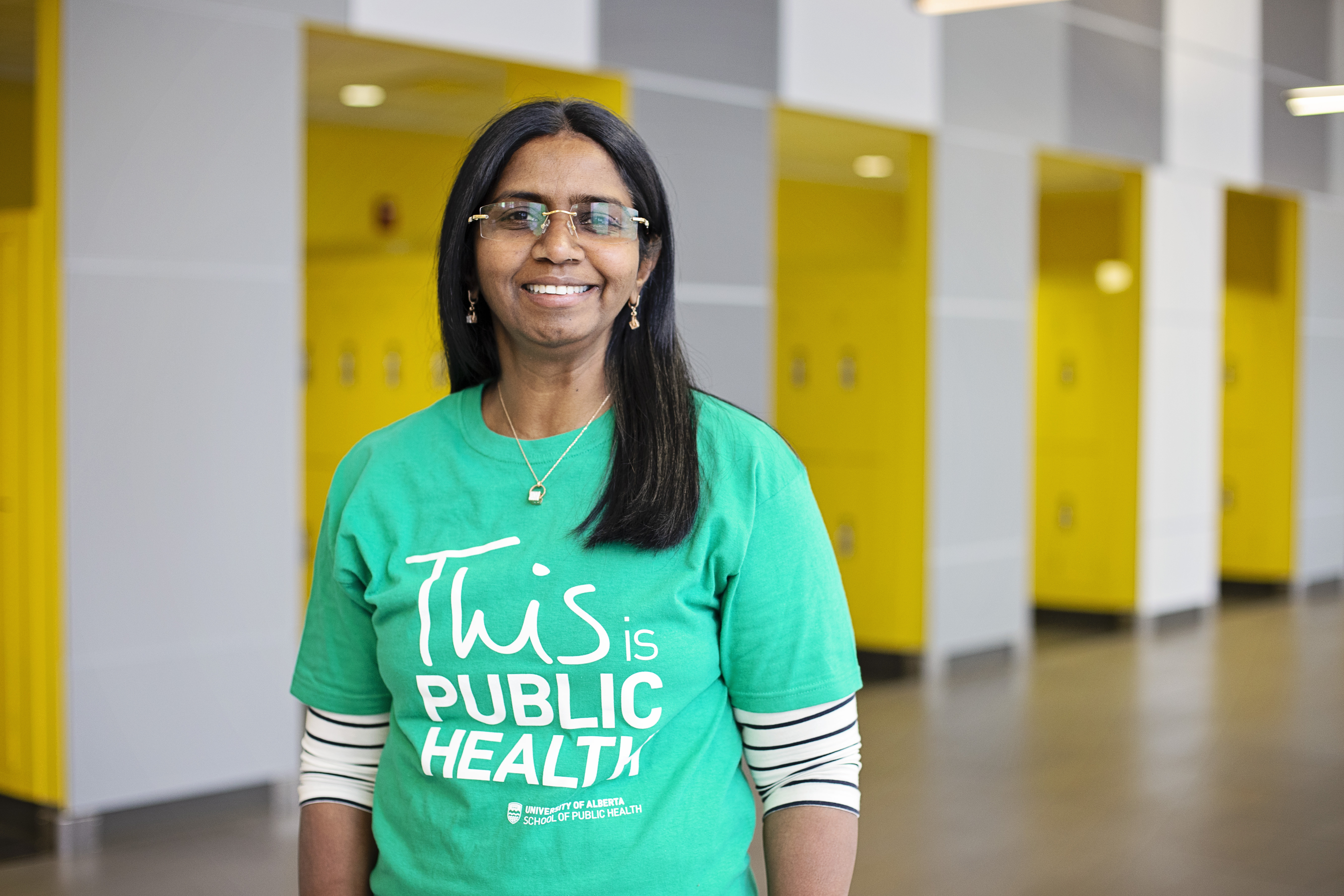The University of Alberta has recently implemented new measures to maximize safety for in-person teaching, learning and research this fall.
Starting September 1, the U of A will require all those coming to campus to be fully vaccinated or undergo regular rapid testing. Non-medical face masks must also now be worn in all public indoor areas on U of A campuses where physical distancing is not possible.
To learn more about how these new measures will impact our campus communities, we spoke with Shanthi Johnson, professor and dean of the U of A’s School of Public Health and co-chair of the university’s Fall 2021 Readiness Committee.
Why is it important to have these new measures now?
Throughout the pandemic, the U of A has been diligent in creating measures to limit the spread of COVID-19. We’ve been monitoring current and emerging risks through a thorough COVID-19 dashboard of indicators that includes rates of infection and the number of positive cases within our own campus communities. The generally, relatively low vaccination rates of people under 30 in Alberta was also cause for concern.
Now that we’re three weeks out from the start of most fall courses — and with recent trends in infection and variant transmissions — we did a thorough assessment for the safest fall start possible for our campus community.
Weighing the personal and community risk implications, our current public health knowledge, and your safety, the new measures for vaccinations or rapid testing, masks and self-isolation are necessary. We need to do our part in mitigating a fourth wave of COVID-19. The pandemic is not over.
How does self-declaration make our campus safer?
Vaccinations continue to be the most effective way to protect public health. In our recent COVID-19 vaccine poll, the U of A got a quick look at how many students, faculty and staff are vaccinated. In total, 95 per cent of the respondents said they were currently fully vaccinated or would be by August 30. That is fantastic news. By asking our community to self-declare their vaccine status, we are taking one big step further to ensure we have an accurate picture of vaccination rates in our community. Vaccination rates are an important indicator for public health that the university’s Public Health Response Team can use to provide informed decisions and advice about public health and safety for our classrooms, labs and campus activities.
Coupled with the requirement for those who are not fully vaccinated to undergo rapid testing, the university has covered the spectrum and provided the best possible start to our fall term.
Over the last month, we heard growing concerns from our community and a strong desire to have a better and stronger picture of vaccination rates directly applicable to our campuses. I’m very pleased that the U of A was able to provide this solution for our campus community. I’ve felt a great deal of relief from our community this week.
Why is wearing a mask in indoor spaces important? What if I'm already vaccinated?
I know many of our students are very eager to start in-person classes again. Wearing masks is an added layer of personal protection they take with them everywhere they go — from SUB to classroom to lab.
Public health officials recommend that we use non-medical masks to reduce community transmission, especially when physical distancing may be challenging. We do know that vaccines offer a high level of protection. However, there is still evidence of rare breakthrough COVID-19 infections in people who are fully vaccinated.
The heightened transmissibility of the Delta variant makes wearing masks all the more important. This means that all our campus community, including those who are vaccinated, must continue to wear non-medical grade masks or face coverings when indoors where physical distancing is not possible.
Do the U of A’s public health measures align with what other post secondaries in Alberta and Canada are doing?
Alberta’s three large, research-intensive universities have established protocols as part of a joint back-to-campus strategy for this fall. We also continue to work together. Alberta’s approach is comparable to other jurisdictions. A number of institutions in Ontario and other parts of Canada have similar or close to similar measures.
Each Canadian post-secondary institution is implementing health and safety practices according to their local, institutional and provincial realities of COVID-19. Provincial and local public health jurisdictions provide guidance and services based on the COVID-19 needs directly in their communities. So, it makes sense that Alberta would have a common approach, while the U of A also makes adjustments according to the unique needs of our campuses, city and community.
What should U of A community members do if they have concerns about COVID-19 safety in their class or workplace?
Everyone with symptoms of COVID-19 (fever, cough, difficulty breathing, etc.) should stay home, self-isolate and complete a self-assessment. If you are advised by Alberta Health Services that you have tested positive for COVID-19, please follow the appropriate university guidelines for employees or students who have tested positive for COVID-19 immediately. If you feel unsafe or have concerns about someone else who is ill in your class or workplace, talk to your instructor or supervisor.
Where should U of A community members go for more information?
Please continue to visit the university’s COVID-19 information website for the most recent information and resources for returning to campus. Full details on the process for self-declaring your vaccination status and the U of A’s rapid testing program will be available soon — and before August 25. How, where, when and what may be required for self-declaring your vaccination status will be a part of that announcement. I also encourage everyone to read through COVID-19 Vaccines and U of A: What You Need to Know — this key resource for the U of A community will continue to be updated as information becomes available.
